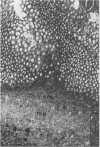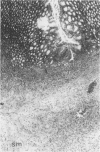Abstract
BACKGROUND: Application of neutralising antibodies (NAs) to transforming growth factor beta 1 (TGF beta 1) improves wound healing in experimental glomerulonephritis and dermal incision wounds. TGF beta 1 has been detected in the stomach, but despite the fact that this cytokine plays a central part in wound healing no information is available to determine if modulation of the TGF beta 1 profile influences the healing of gastric ulcers. This study examines gastric ulcer healing in the rat after local injection of NAs to TGF beta 1. METHOD: Chronic gastric ulcers were induced in Wistar rats by the application of 100% acetic acid to the serosal surface of the stomach. Immediately after ulcer induction and on day 2, NAs to TGF beta 1 (50 micrograms), TGF beta 1 (50 ng), saline or control antibodies (IgG; 50 micrograms) were locally injected into the subserosa. Controls received no subserosal injections. Animals were killed on day 5 or 11, the ulcer area was measured planimetrically, sections were embedded in paraffin wax, and stained with trichrome or haematoxylin and eosin. Depth of residual ulcer was assessed on day 11 by a scale of 0-3, the percentage of connective tissue was determined by a semiquantitative matrix score and granulocytes and macrophages in the ulcer bed were also assessed. RESULTS: The application of NAs to TGF beta 1 led to a significant acceleration of gastric ulcer healing on day 11 (0.6 (SD 0.8) v 3.7 (SD 2.6) mm2), a reduction in macrophages (23.7 (SD 22.6) v 38 (26) per 40 x power field) and granulocytes (8.5 (SD 5.6) v 20 (10) per 40 x power field), fewer histological residual ulcers (mean 1 (SD 0.9) v 2 (1.1)), a reduced matrix score, and a regenerative healing pattern. Excessive scarring was seen in the TGF beta 1 treated group. CONCLUSION: Further treatment of gastric ulcers may induce a new treatment modality by local injection of NA to TGF beta 1 in an attempt to accelerate and improve ulcer healing.
Full text
PDF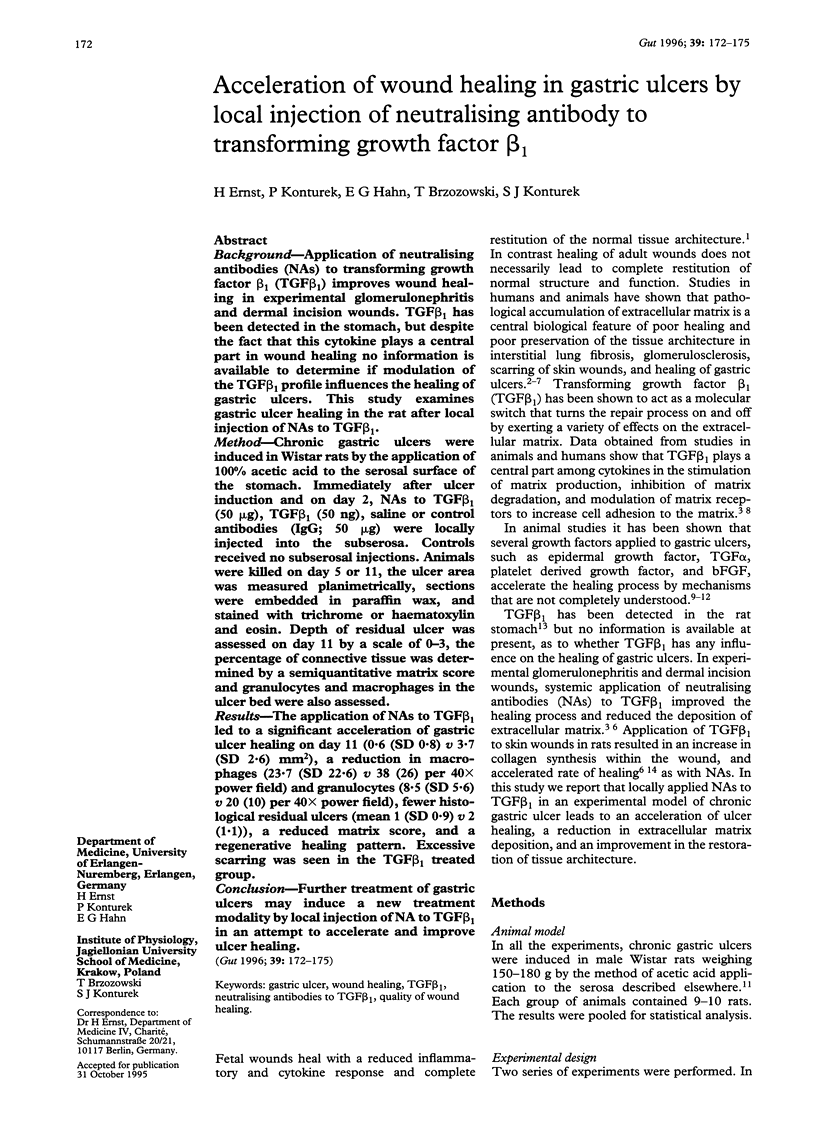
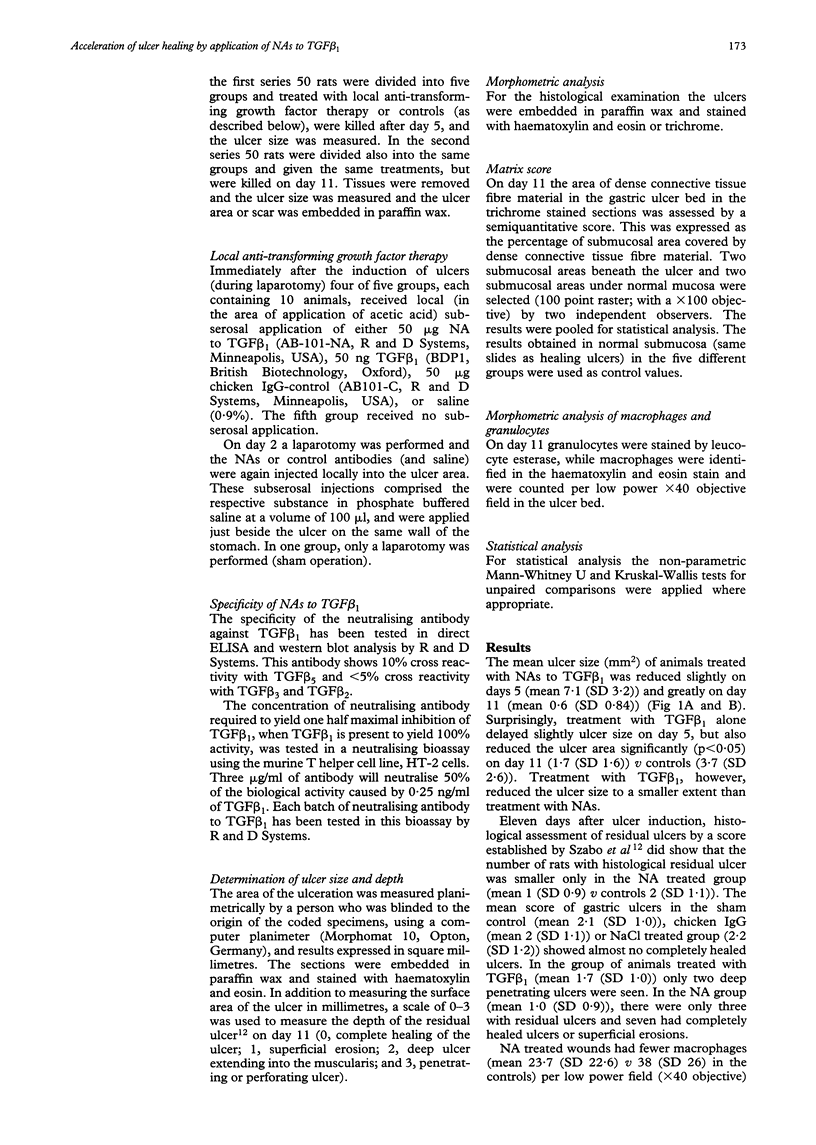
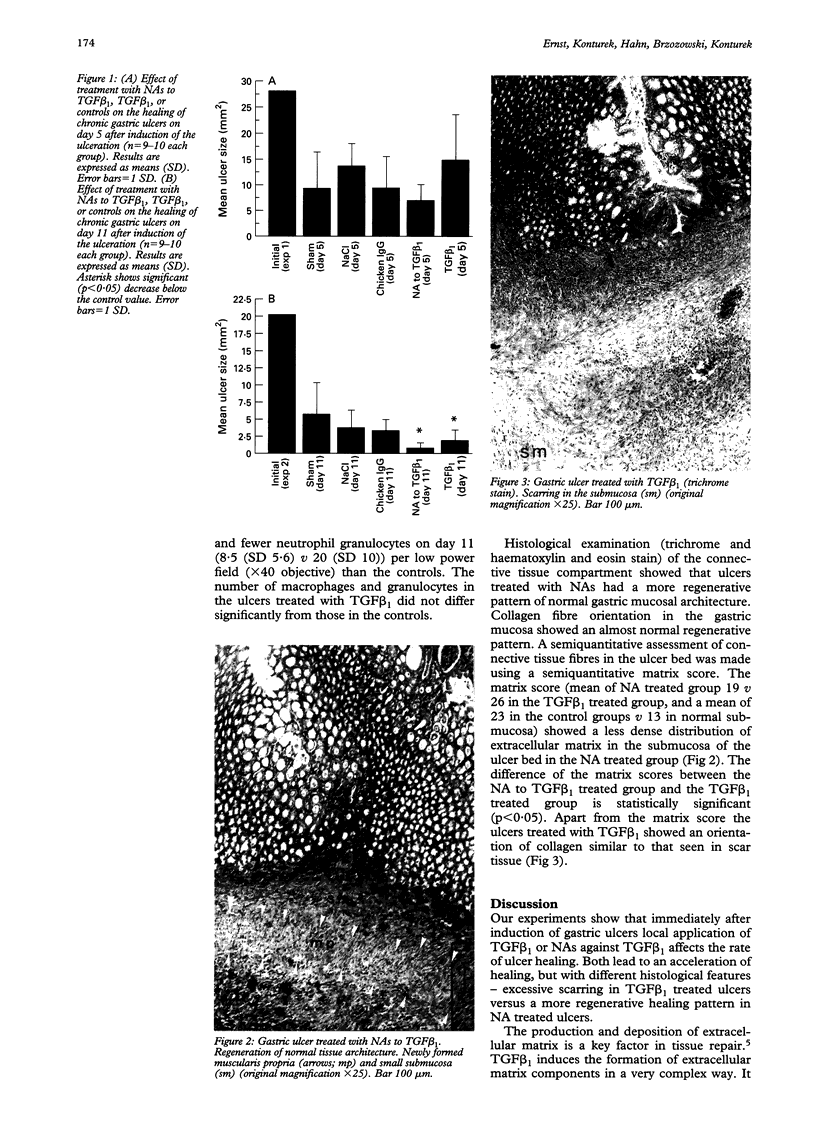
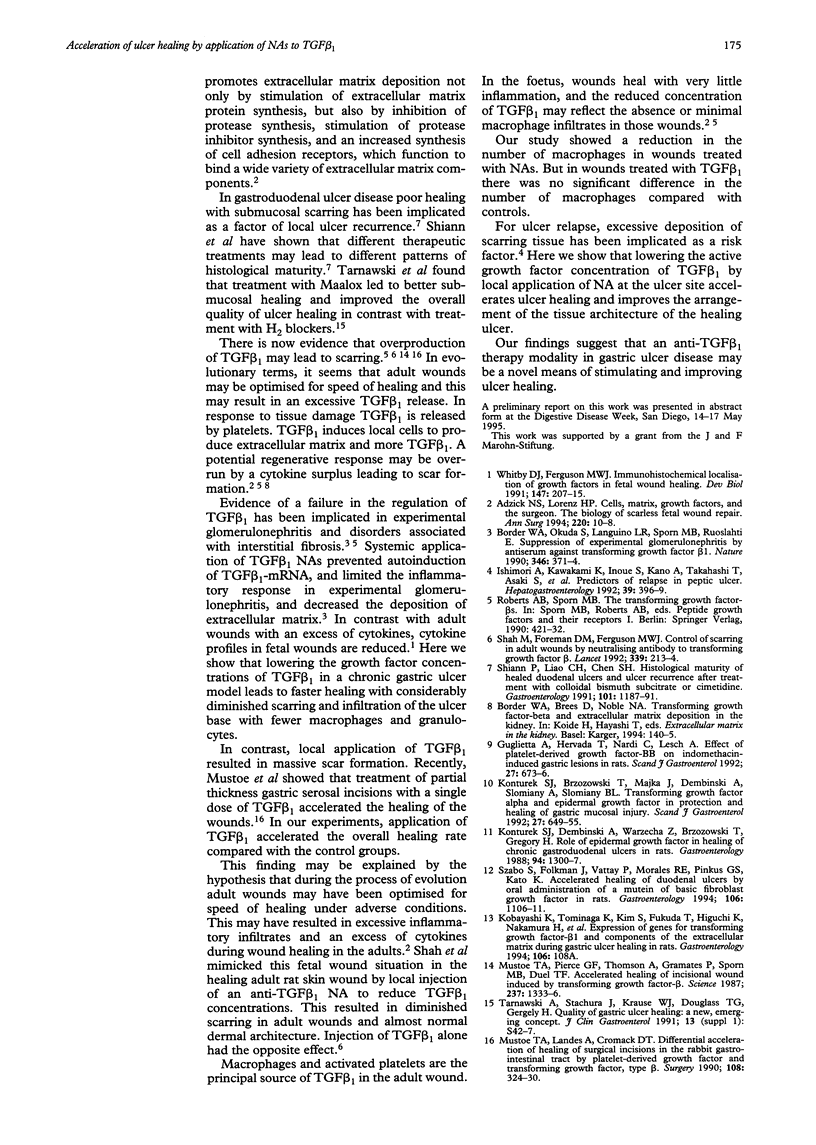
Images in this article
Selected References
These references are in PubMed. This may not be the complete list of references from this article.
- Adzick N. S., Lorenz H. P. Cells, matrix, growth factors, and the surgeon. The biology of scarless fetal wound repair. Ann Surg. 1994 Jul;220(1):10–18. doi: 10.1097/00000658-199407000-00003. [DOI] [PMC free article] [PubMed] [Google Scholar]
- Border W. A., Brees D., Noble N. A. Transforming growth factor-beta and extracellular matrix deposition in the kidney. Contrib Nephrol. 1994;107:140–145. doi: 10.1159/000422972. [DOI] [PubMed] [Google Scholar]
- Border W. A., Okuda S., Languino L. R., Sporn M. B., Ruoslahti E. Suppression of experimental glomerulonephritis by antiserum against transforming growth factor beta 1. Nature. 1990 Jul 26;346(6282):371–374. doi: 10.1038/346371a0. [DOI] [PubMed] [Google Scholar]
- Guglietta A., Hervada T., Nardi R. V., Lesch C. A. Effect of platelet-derived growth factor-BB on indomethacin-induced gastric lesions in rats. Scand J Gastroenterol. 1992 Aug;27(8):673–676. doi: 10.3109/00365529209000138. [DOI] [PubMed] [Google Scholar]
- Ishimori A., Kawakami K., Inoue S., Kano A., Takahashi T., Asaki S., Kawamura T., Koizumi F. Predictors of relapse in peptic ulcer. Hepatogastroenterology. 1992 Oct;39(5):396–399. [PubMed] [Google Scholar]
- Konturek S. J., Brzozowski T., Majka J., Dembinski A., Slomiany A., Slomiany B. L. Transforming growth factor alpha and epidermal growth factor in protection and healing of gastric mucosal injury. Scand J Gastroenterol. 1992 Aug;27(8):649–655. doi: 10.3109/00365529209000134. [DOI] [PubMed] [Google Scholar]
- Konturek S. J., Dembinski A., Warzecha Z., Brzozowski T., Gregory H. Role of epidermal growth factor in healing of chronic gastroduodenal ulcers in rats. Gastroenterology. 1988 Jun;94(6):1300–1307. doi: 10.1016/0016-5085(88)90667-1. [DOI] [PubMed] [Google Scholar]
- Mustoe T. A., Landes A., Cromack D. T., Mistry D., Griffin A., Deuel T. F., Pierce G. F. Differential acceleration of healing of surgical incisions in the rabbit gastrointestinal tract by platelet-derived growth factor and transforming growth factor, type beta. Surgery. 1990 Aug;108(2):324–330. [PubMed] [Google Scholar]
- Mustoe T. A., Pierce G. F., Thomason A., Gramates P., Sporn M. B., Deuel T. F. Accelerated healing of incisional wounds in rats induced by transforming growth factor-beta. Science. 1987 Sep 11;237(4820):1333–1336. doi: 10.1126/science.2442813. [DOI] [PubMed] [Google Scholar]
- Pan S. A., Liao C. H., Lien G. S., Chen S. H. Histological maturity of healed duodenal ulcers and ulcer recurrence after treatment with colloidal bismuth subcitrate or cimetidine. Gastroenterology. 1991 Nov;101(5):1187–1191. doi: 10.1016/0016-5085(91)90066-t. [DOI] [PubMed] [Google Scholar]
- Shah M., Foreman D. M., Ferguson M. W. Control of scarring in adult wounds by neutralising antibody to transforming growth factor beta. Lancet. 1992 Jan 25;339(8787):213–214. doi: 10.1016/0140-6736(92)90009-r. [DOI] [PubMed] [Google Scholar]
- Szabo S., Folkman J., Vattay P., Morales R. E., Pinkus G. S., Kato K. Accelerated healing of duodenal ulcers by oral administration of a mutein of basic fibroblast growth factor in rats. Gastroenterology. 1994 Apr;106(4):1106–1111. doi: 10.1016/0016-5085(94)90773-0. [DOI] [PubMed] [Google Scholar]
- Tarnawski A., Stachura J., Krause W. J., Douglass T. G., Gergely H. Quality of gastric ulcer healing: a new, emerging concept. J Clin Gastroenterol. 1991;13 (Suppl 1):S42–S47. doi: 10.1097/00004836-199112001-00007. [DOI] [PubMed] [Google Scholar]
- Whitby D. J., Ferguson M. W. Immunohistochemical localization of growth factors in fetal wound healing. Dev Biol. 1991 Sep;147(1):207–215. doi: 10.1016/s0012-1606(05)80018-1. [DOI] [PubMed] [Google Scholar]
- Williams D., Thompson D. G., Heggie L., O'Hanrahan T., Bancewicz J. Esophageal clearance function following treatment of esophagitis. Gastroenterology. 1994 Jan;106(1):108–116. doi: 10.1016/s0016-5085(94)94713-9. [DOI] [PubMed] [Google Scholar]



